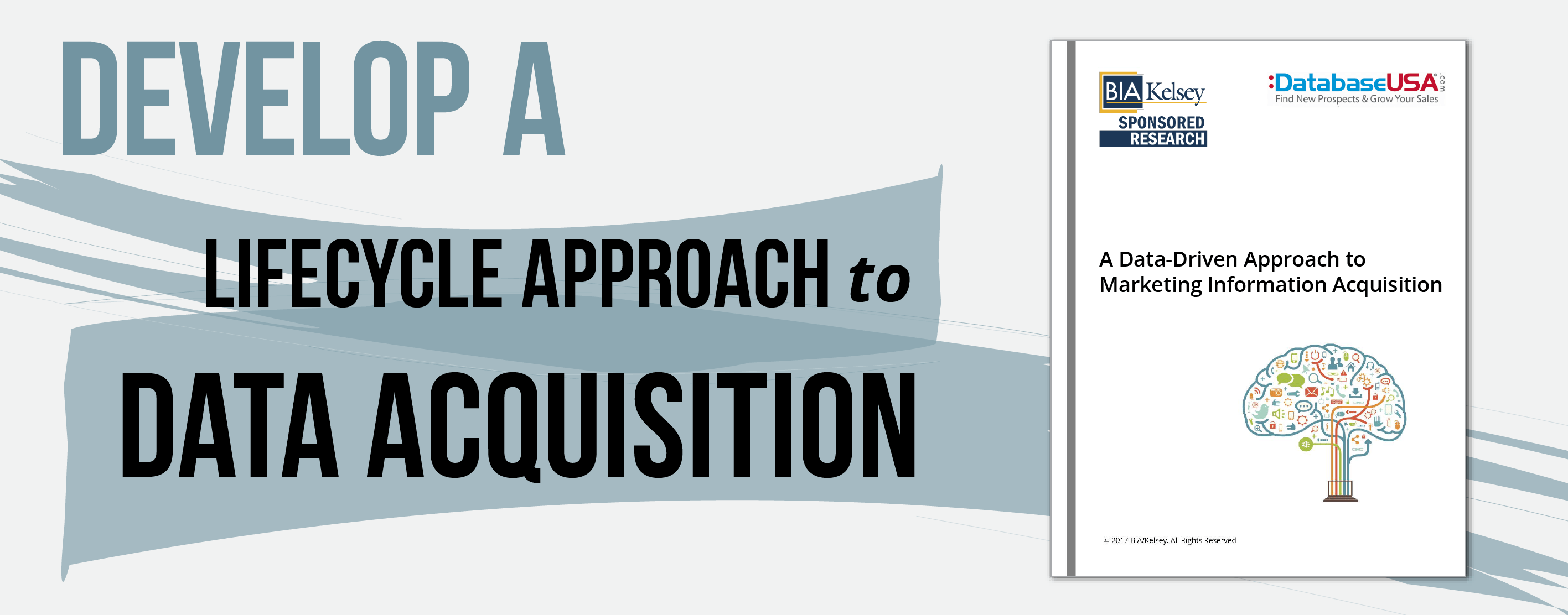BIA/Kelsey has released A Data-Driven Approach to Marketing Information Acquisition, a sponsored research report exploring the how analysts can use an initial wide-ranging investigational step to discover target customers followed by refinement of selection criteria. It examines how to narrow the data purchase to match company customer goals and objectives.
More than the scope of data use is changing today. Marketers have many more channels to address potential customers, and customers are sharing more data than ever before. But most organizations still treat data purchases with the relatively casual due diligence that dominated when mailing was the only imagined use for a business or consumer contact list. Today, data is an essential aspect of planning, from the initial product concept through delivery, as well as providing the basis for enhanced customer engagement and post-purchase service and support. Each data asset acquired should be applied across the business, not just in outbound or inbound marketing teams.
We recommend a ‘whole buffalo’ approach to the acquisition of data. Learn to use every iota of value in a data set.
I’ve long been struck by the astonishment of native tribes in the American West at the wasteful practices of European buffalo hunters, who took only the pelt and left the rest of the animal to rot on the prairie. By contrast, native peoples left nothing to waste, using every part of the buffalo they killed, down to the hooves.
It has taken several decades since the introduction of digital data, but marketers now recognize that databases are much more than the initial mailing targets for a campaign. They’ve learned to see beyond the valuable pelt of mailing or phone contact information to the demographic meat and bone that makes rich well-vetted data sources indispensable to targeted marketing possible.
When developing a targeted database, companies must adopt a full-life cycle approach to using the resulting data, applying data insights across the company. The benefits of a full life cycle approach to data acquisition include:
- Alignment of marketing, inventory and fulfillment processes
- Greater strategic flexibility in campaigns and messaging
- Segmentation of data for use in targeting content development and delivery by channel
- Improved inventory, accounting and credit risk management
- The ability to blend internal first-, second- and third-party data analytics to benchmark performance
- Comprehensive data access across the organization
This report is an important read for enterprise marketers, product leadership, data analytics and resource planning professionals, as well as financial teams that want to map the trajectory of a successful campaign to the sales it generates and the service and support it will require to keep and, eventually sell again to converted customers. Demographic, firmographic or other targeted characteristics for a data purchase will deliver a stronger return on investment than poorly targeted ones.
A well-developed data set can serve many purposes in the 21st Century business. Check out the paper today.

